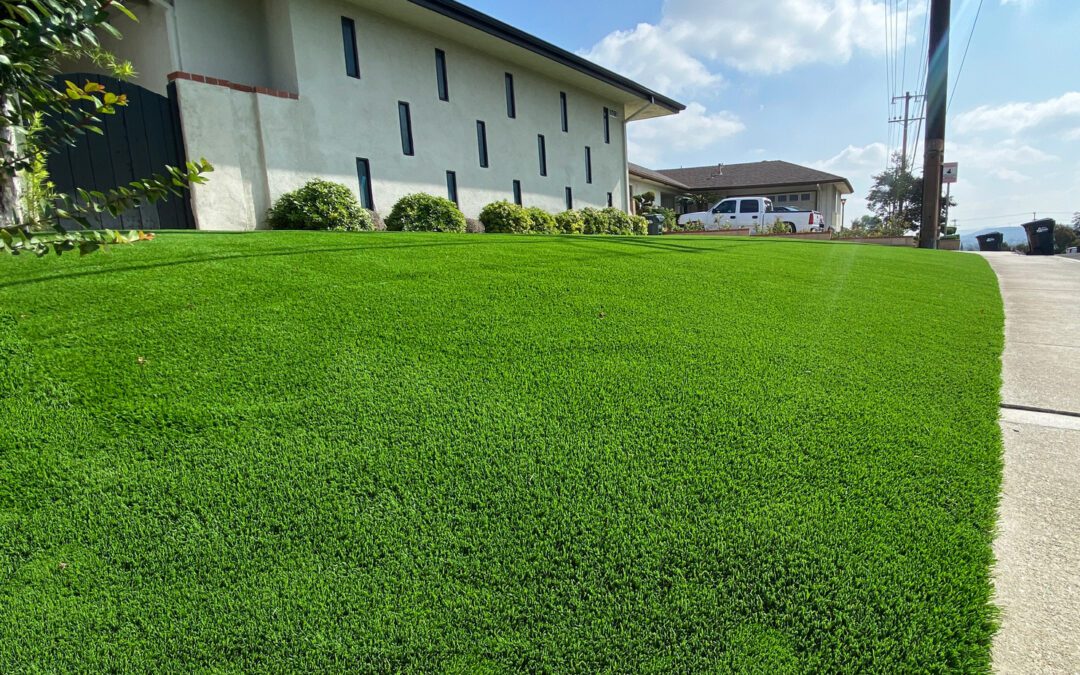Artificial grass has come under fire a fair amount as sustainability gains importance in landscaping and home renovation projects. Synthetic turf’s positive environmental effects are frequently overshadowed by misconceptions and urban legends. By dispelling widespread misconceptions and showcasing the environmentally benign qualities of artificial grass, we hope to throw some light on the topic through this blog.
# Myth 1: Artificial Grass Is Harmful to the Environment
Debunked: Due of worries regarding the manufacture and disposal of synthetic turf, this myth frequently circulates. However, in some situations, artificial grass has a substantially lower total environmental impact than real grass.
Water Conservation: The capacity of artificial grass to conserve water is one of its most notable advantages. Natural grass needs a lot of irrigation, which can result in water waste, particularly in desert areas. This requirement is eliminated by artificial grass, helping to conserve water.
Reduced Chemical Use: Fertilizers and pesticides, which can damage ecosystems when they leak into the soil and rivers, are frequently used to maintain a natural lawn. By removing the need for these pesticides, artificial grass encourages cleaner, chemical-free settings.
# Myth 2: Artificial Grass Is Not Biodegradable
Disproved: While it is true that synthetic grass is not biodegradable in the conventional sense, this does not necessarily imply that it is bad for the environment. In fact, it might be advantageous.
Durability: Top-notch artificial grass has a long lifespan that frequently exceeds 20 years. This durability lessens the need for frequent replacements, which over time might use more resources and produce more waste.
Options for recycling: A lot of artificial grass producers are already recycling old turf components to make new goods. This environmentally friendly method lessens waste and synthetic turf’s impact on the environment.
# Myth 3: Artificial Grass Contributes to Heat Islands
Disproved: Heat islands are seen in cities with lots of concrete and asphalt. It’s a frequent misperception that artificial grass is responsible for this phenomena.
Benefits of Cooling: Unlike asphalt and concrete, artificial grass does not absorb heat or reflect it. Instead, because of its synthetic materials and frequently lighter colors, it manages to stay reasonably cool even on hot days. In this way, using fake grass in urban environments can help reduce the effects of heat islands.
Greenhouse gas emissions from lawnmowers and other gas-powered equipment are frequently produced when maintaining a natural grass lawn. These emissions-producing activities can be done without using artificial grass.
# Myth 4: Artificial Grass Is Not Eco-Friendly
Disputed: The term “eco-friendliness” refers to a broad notion that takes into account several environmental factors. While artificial grass might not be the best option, it has a number of environmentally friendly advantages.
Water Savings: Conserving water is artificial grass’ main sustainability benefit. Significantly less water is used because irrigation is not necessary.
Chemical Reduction: As was already noted, avoiding the use of chemical pesticides and fertilizers when maintaining artificial grass encourages the development of healthier ecosystems.
Recycling Initiatives: By recycling used artificial grass components, many producers are working to reduce waste. Synthetic turf has a smaller negative environmental impact because to this sustainable strategy.
When considered in the larger context of resource conservation, chemical reduction, and waste management, artificial grass is a sustainable landscaping alternative. Although there are a lot of misconceptions and fallacies about synthetic turf’s environmental impact, it’s important to understand all the ways it benefits sustainability initiatives. Homeowners and landscapers may embrace artificial grass’ eco-friendly potential and take advantage of both a lovely lawn and a healthier planet by making informed decisions and investigating eco-friendly options in the material.

